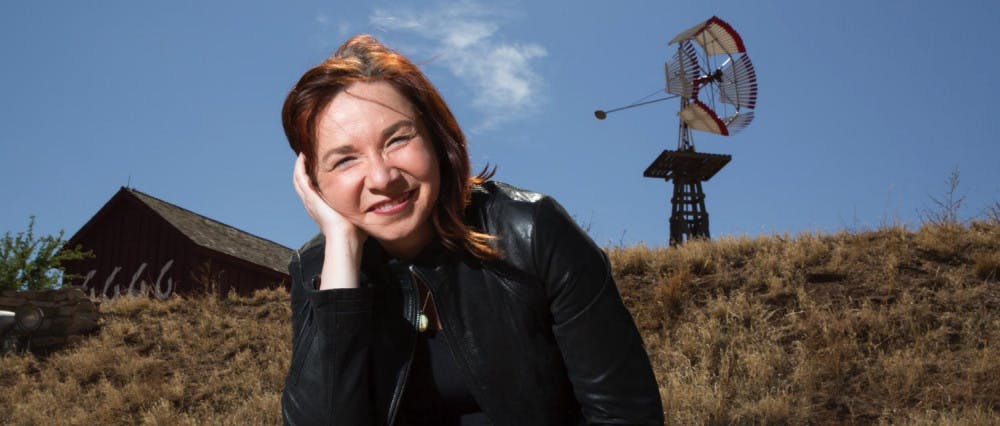On Tuesday, March 20, Dr. Katharine Hayhoe, director of the Climate Science Center at Texas Tech University, gave a talk via Skype to the Middlebury community entitled “Climate Change: Communicating Across Divides.” Environmental Studies Scholar in Residence Bill McKibben introduced Dr. Hayhoe, framing the talk around two questions: Who do you want to engage in challenging conversation of climate change? And how would you like to approach that? Hayhoe, an atmospheric and climate scientist who was named one of Time’s 100 most influential people in the world in 2014, spends much of her time traveling the world giving talks and thinking about these questions.
After McKibben’s introduction, Dr. Hayhoe began by discussing the idea of not believing in climate change. Today, our news headlines are telling the story of destruction by climate change, yet some people who are experiencing the effects of climate change first-hand and from afar still deny the facts.
Dr. Hayhoe showed several charts produced by studies that broke down study participants by political affiliation, which is the best predictor of how people view climate change science. One study asked if recent extreme weather events add to evidence for climate change, and while 80-90% of liberals said yes, only 30-35% of conservatives said yes.
Despite the fact that climate change is purely a matter of science, Dr. Hayhoe explained that people often make climate change an issue of faith and belief, which makes it difficult to challenge. This is due to the notion that a person’s ideas of climate change are often an integral part of their belief system. People have been told for decades that climate change is a “liberal hoax,” and ideas like that are difficult to change.
Particularly in our polarized political state, it is important to bridge the gap between parties and encourage politicians who have a plan and a credible idea of how to act on climate change.
With this introduction about belief in climate change, Dr. Hayhoe addressed McKibben’s questions of who to talk to about climate change and how to talk to them. Dr. Hayhoe categorized Americans in terms of their beliefs in climate change in six ways: alarmed, concerned, cautious, disengaged, doubtful and dismissive. Dr. Hayhoe spends little of her time talking to dismissives, which she approximates at around 10 percent of the population, because their disbelief in climate change is likely unchangeable. Instead she spends most of her time trying to move disengaged and doubtful people into the concerned group, which will encourage long-term action instead of producing unsustainable anxiety about climate change.
This goal in mind, Dr. Hayhoe has a three-step strategy for talking to people in a positive and constructive way about the imminent importance of climate change. The first step is to bond with and connect to the people you are talking to. Dr. Hayhoe suggests finding common, often faith-based values to discuss, noting the profound impact of religious leaders in constructively talking about climate change, particularly among Catholic groups.
The second step is to explain the science and explain why we should care about climate change. Few people think that climate change will harm them but instead will just harm future generations and polar bears.Convincing people that climate change is real and will affect them is crucial. Finding specific examples of how climate change could affect people directly, like how changing weather patterns and seasons are affecting dairy production in Vermont, helps people relate to climate change.
The third step is to inspire the people you are talking to and leave them feeling empowered. When talking about actions, explaining what you can do on a personal and organizational scale makes actions feel manageable. Sharing articles on social media is also effective and can spread messages of hope.
With this action plan of how to discuss climate change with any group of people, Dr. Hayhoe closed by answering questions from the audience about specific instances of creating positive conservations and encouraged us to do research into facts on climate change in order to be able to show people the importance of acting on climate change.
How to Talk About Climate Change

Comments



